这几天拜读了乐泰公司的Darryl J. Small和Brian Eisenach所写的《Electrically Conductive Adhesives Characteristics and Applications》,看完后查阅了一下文章属性,这篇文章应该是在约1999年左右写的。其实当时乐泰公司应该就在关注此项应用,曾经听过一个传闻,乐泰公司当时花了上亿的资金来开发导电胶和导电材料,或许确有其事。
文中提到的几项应用就目前现状而言分析如下:
1、 芯片的粘接可能是现在运用最广泛的,当初设计替代焊锡也只有在一些特殊场合才能用到,不过这个领域几乎是被以前的国民淀粉下的Ablestick所垄断,所以今年听说汉高乐泰将其收购了,只怕也是以此机会来垄断导电银胶的市场。
2、 另外一块关于各向异性导电胶ACA/ACP的预计也是如其所言,不过目前LCD行业在FPC软板与GLASS连接时使用的依旧是ACF材料,此材料目前应该基本还是日立化成和索尼化学垄断。至于ACA在RFID这个新兴领域中的应用目前似乎是德国DELO公司的产品占有较大的市场份额,但是包括象日本三键,黑铅等公司都有类似的产品。汉高收购了Ablestick及EMERSONCUMING后似乎也开始推广其一款用于RFID的ACA产品,看来虽然RFID的发展没有预期的那么快,但大家对其市场前景的期望似乎一直没有降低。
3、 还有就是导电硅胶的应用,用于EMI及RFI屏蔽作用,这一块以前接触得比较少,不过近两年倒是接到过不少类似的咨询,一个主要用途就是手机外壳连接时使用,但是似乎对于电磁屏蔽这一块的标准好像各国不同,发现有很多手机类的产品并不使用此胶或者使用其它的屏蔽方式实现,这个可能和最初的设计方案有很大的关系。就目前市场情况来看,好像是一家叫莱尔德Laird的公司(www.lairdtech.com)做得不错,在中国好像也设有工厂。
文中还提到了其他的一些应用点,但似乎也是在焊锡不便使用时替代之的,并没有形成相应的产业或行业。 另外关于LED用的导电银胶文中没有直接提到,实际上也可归结为芯片粘接一类,这一块目前高端的也是被Ablestick和Sumitomo所占领的。
此文主要是以导电胶为主介绍,对于导电浆料等没有做太多的涉及,其实就导电材料这样的一个大的概念而言,市场也是具有很大的潜力的。顺便查了一下银从1999年到现在的历史价格,从2000年左右的最低1000元到2008年初的接近5000元,现在好像是在2000出头,或许现在银胶又能重现一些成本优势哦,呵呵!
大家可以下载附件查看图文并茂版原文:elec_cond_adh-characteristics_and_applications,(华为网盘下载:http://dl.dbank.com/c0jtkba9tb)有什么想法也可以评论交流一下哦!
Electrically Conductive Adhesives Characteristics and Applications
Darryl J. Small, Senior Applications Engineer and
Brian Eisenach, Product Manager
Loctite Corporation
Continuing improvements in adhesive technology have enabled adhesives to replace solder in many electronic assembly applications. There are three types of electrically conductive adhesives formulated to provide specific benefits where an electrical interconnect is desired. Isotropic materials, which will conduct electricity along all axes, are able to replace solder on thermally sensitive components, and can also be used on devices that require a ground path. Conductive silicones help protect devices from environmental hazards such as moisture, and shield electromagnetic and radio frequency interference (EMI/RFI) emissions. Anisotropic conductive polymers, which allow electrical current to flow only along a single axis, provide electrical connectivity and strain relief for flip chip devices. All electrically conductive adhesives have two common qualities: they provide a chemical bond between two surfaces, and they conduct electricity.
Isotropic Materials
Electrically-conductive isotropic epoxies can be used as an electrical interconnect on non-solderable substrates such as glass and ceramic, or to replace solder on thermally-sensitive components that cannot withstand the 200?C processing temperatures of typical solders. Traditional applications for isotropic epoxies include bonding the flex circuit of a glass LCD display to the mating trace on a PCB, or attaching a component lead to a matching land on a thermally-sensitive printed circuit board.
Isotropic electrically-conductive epoxies offer non-directional, or all-directional, conductivity by incorporating conductive particles such as silver, nickel, or gold into the adhesive formulation. These particles carry electrical current through the epoxy resin.
The most popular filler material is silver due to its moderate cost and superior conductivity.
Isotropic silver-filled epoxies are available in heat or room-temperature curing, single- or two-component formulations. Since electrically conductive epoxies require temperatures of only 150?C or less to cure, and room temperature curing is a viable option, isotropic epoxies are an ideal alternative to solder on thermally sensitive parts.
Several varieties of silver-filled, isotropic epoxies are available to electronic device manufacturers. General-purpose silver-filled room temperature or heat curing epoxies have been formulated specifically for rework and repair applications on large-pitch interconnects. For example, if the trace on a circuit board抯 surface gets gouged, selected versions of these epoxies may be used to repair the circuit in place of the original solder. These adhesives can also be used as a solder substitute on through-hole components. Both electrically and thermally conductive, these epoxies develop strong, durable bonds on many different substrates including metals, ceramics, glass, laminates, and molded plastics.
Room temperature curing, flexible silver-filled epoxies have been formulated for electronic interconnect applications that require high flexibility, such as assembly and repair of flexible circuits or bonding flexible substrates and connectors.
“Gold Bonders” are heat curable epoxies formulated to offer enhanced adhesion to goldplated devices and other high-end metal surfaces such as palladium. These adhesives offer enhanced shear strength, and are formulated to absorb the stress associated with extreme thermal mismatch between dissimilar substrates. Typical adhesives on the market today cure in 30 minutes at 150?C, or in one hour at 125?C.
Certain grades of silver-filled epoxies are specifically formulated for direct use on the die, and are aptly referred to as “Die Attach Grades.” These adhesives are formulated to provide an electrical groundpath and transfer heat from the chip to the substrate (Photo 1). A variety of formulations are available, offering benefits such as high purity and low ionic content, a long working life, or snap heat cures of three minutes or less.
Descriptions of real-world applications will better illustrate the use of isotropic electrically conductive adhesives:
Application: Low Temperature Processing
A manufacturer of antennas sold to wireless communications companies was asked by a customer to attach the aluminum plane on the antenna to a flexible coax connector. The speed of the bonding process was not an important issue; however, the cost of the process was critical. Although the manufacturer抯 first inclination was to solder the two components together, they soon learned that thesensitive components inside the coax connector would not tolerate the temperatures required by soldering. The antenna manufacturer solved the problem by bonding the two components with a room temperature-curing electrically conductive isotropic adhesive. The adhesive provided the electrical interconnect required for the device, reduced processing temperatures, and, as no oven was required for the assembly process, greatly controlled equipment and processing costs.
Application: Solder Leaching
On an electronic device used in a satellite link control unit, two high-frequency antennas are attached to an FR4 printed circuit board. The manufacturer of the device had considered using solder, but, during testing, experienced significant problems with leaching during the reflow process. Electricity is transmitted through the device at ultrahigh frequencies, and mechanical methods of attachment were not feasible because of the use of fine pitch components. The manufacturer chose a heat-cure electrically conductive isotropic adhesive paste over solder, and thereby eliminated leaching problems and provided a long use life that did not require freezer storage. In addition, the electrically conductive adhesive provided the necessary electrical interconnect for the thermally sensitive components used to manufacture the device.
Application: Stress Cracking
An electronics manufacturer was experiencing problems attaching surface mount components to a flex circuit. Since solder cannot be bent to 360? without stress cracking, the use of flexible electrically conductive adhesives made this application possible. The adhesive was first stenciled onto the polyimide flex circuit, the surface mount component was placed onto the polyimide substrate, and a heat cure process bonded the two components together. The polyimide could then be easily flexed without breaking the circuit.
Application: Thermal Mismatch
In a flip chip in BGA application, a manufacturer of computer components mounts a bumped die directly to a base substrate, and underfills the die to protect the solder joints from thermal and physical shock. To further protect the chip, a metal cap is placed over the chip and bonded in place using a flexible isotropic electrically conductive adhesive. The adhesive provides three benefits in this application: the material flexibility allows it to withstand the differing rates of thermal expansion (CTE) between the metal cap and the silicon chip and to provide bond strength between the parts; the adhesive acts as a ground circuit between the chip and the cover; and the material is thermally conductive to help transfer heat from the chip to the cover, which acts as a secondary heat sink.
Conductive Silicones
New conductive silicone materials allow device manufacturers to shield EMI/RFI emissions and seal electronic enclosures, protecting them from environmental hazards. Conductive silicones can be applied directly to areas that require environmental sealing and EMI/RFI shielding, and cured-in-place to form a customized gasket that eliminates the need to inventory cut gaskets.
There are a number of conductive fillers that can be incorporated into gasketing formulations. These materials are available with varying levels of attenuation and different cure methods including heat cure and room temperature vulcanization.
In addition to environmental protection and EMI/RFI shielding, conductive silicones can also be used to provide ground paths for electronic devices that require high flexibility. For example, on video touch screens, silicone conductive adhesives are used to bond wire leads to a ground strip on the back of the screen, providing an electrical interconnect that communicates the request for information from the touch screen to the circuits inside the computer. Whereas solder and most other adhesives would be too rigid to hold up against the constant contact required by the touch screen, highly flexible and resilient silver-filled conductive silicones easily survive high impact applications.
Anisotropic Conductive Polymers
Electrically conductive anisotropic polymers offer structural integrity as well as electrical interconnection. Because these adhesives are designed to provide electrical interconnection only at planned sites where particles come into direct physical contact with conductive substrates, anisotropic adhesives can be used to provide structural strength without an electrical connection on other areas of the device.
Anisotropic polymers allow electrical current to travel uni-directionally, or along only one axis. The adhesive matrix contains a concentration of electrically-conductive metal particles that is below isotropicity ?in other words, the concentration of conductive particles is limited to allow electricity to travel only in the Z-direction, and not on the XY plane. (Figure 2) Particles are isolated from one another so that electricity travels in only one direction; if conductive particles do make contact, electrical current will travel along the X and Y axis as well as the Z-axis.
Anisotropic adhesives are currently available in two forms — single-component, heat-curable liquids and pastes, and heat curable thermosetting or thermoplastic adhesive films. In the global marketplace, 90 percent of all anisotropic polymers are currently sold as films used for LCD production, particularly flexible circuit connection to glass. In addition to LCD assembly, other emerging applications for anisotropic conductive adhesives include flip-chip-onglass, smart cards, and flip-chip-on-board. The common characteristic linking all of these applications is the inability to solder one or more of the substrates that make up the device because of thermal sensitivity of the substrate, or temperature constraints imposed by the process.
During assembly, manufacturers using anisotropic polymers must carefully control the placement of the chip. Whereas the surface tension of molten solder will correct for inexact chip placement, for anisotropic materials to establish a working electrical connection the chip must be placed exactly in-line with the Z-axis, and heat and pressure must be maintained on the chip until the adhesive has cured.
Currently available anisotropic adhesive tape products offer a random distribution of conductive particles ?this means that particles are not distributed in an organized manner and may come into contact with one another or be absent in areas where they are needed. Contact between a number of particles can cause short circuits in the X-Y plane; voids, or areas where particles are absent at a critical interconnect site, result in open circuits. For high-end electronic applications that require fine pitch capabilities, some adhesive manufacturers are currently working to develop anisotropic adhesive films with ordered particle distribution, which would guarantee only z-axis conductivity and overcome problems with open and short circuits.
The majority of anisotropic liquid adhesives used for electronic packaging are epoxies; however, a wide range of other polymers could be used to achieve unidirectional interconnection and a strong structural bond. Common materials available on the market contain gold-coated polymer spheres, solder-type alloys, or solid metal powders such as nickel, gold, or silver.
Application: Flip-Chip on Flex for a Smart Card Module
A manufacturer of smart cards wanted to reduce the profile size of their cards. The thickest component in the 150 micron smart card was a 130 micron wire bonded chip covered by a glob top encapsulent. By replacing the wire bonded chip and encapsulant with a flip chip that attaches directly to the substrate, the manufacturer could reduce the profile thickness by 70 percent, to 40 microns. Solder could not be used in this case because the polyamide flex circuit used in the smart card was not a solderable material. Also, the anisotropic adhesive could establish an electrical interconnection for the dense pattern of bumps on the flip chip while providing the structural strength required to bond and protect the chip.
Cost of Electrically Conductive Adhesives Versus Solder
Adhesive assembly requires approximately half as much material as does solder for the same application. When material costs are considered alone, the cost of adhesives is typically several times the cost of solder per gram. However, the processing costs of adhesives can be substantially lower than those of solder as there are fewer steps involved in adhesive bonding.
Electronic device assembly using adhesives is basically a three-step process: 1) adhesive is applied to the component or the substrate using automated dispense equipment or a manual syringe dispenser; 2) components are placed on the substrate; and 3) the assemblies are placed in an oven for heat cure, although room-temperature curing is also an option. The reflow soldering is more complicated and typically involves a five-step process: 1) the substrate is treated with flux to prepare the surface; 2) solder is dispensed onto the board via stencil printing or syringe dispense; 3) components are placed on the board; 4) the board is put through a reflow oven and cooled; and 5) the remaining flux is cleaned from the board using solvents.
The processing time for the dispense process and heating steps are very similar for both solder and adhesive bonding. However, adhesives do not require the time and expense of flux application and cleaning. Solder flux was once removed quickly and inexpensively using CFCs which evaporated into the environment. In the aftermath of the Montreal Protocol, CFC use has been curtailed, and board manufacturers are often forced to use much less efficient and less cost-effective cleaning methods to remove flux. On the contrary, adhesives are extremely process friendly, reducing hazardous waste chemicals or associated disposal costs.
Despite all these factors, solder is often less expensive than adhesives for standard electronic packaging applications. For specialized applications that have heat sensitive components or non-solderable substrates, however, electrically conductive adhesives are frequently the only option.
Conclusion
Into the future, electrically conductive adhesives will play an increasingly prominent role in the design and production of electronic packages. A number of factors will drive this growing need, including:
1.the greater demand for fine pitch capabilities;
2.the need to control greater amounts of heat generated by increasingly powerful integrated circuits,
3.and the use of non-solderable or thermally-sensitive substrates such as glass andplastics.


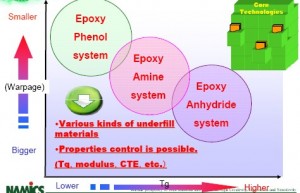
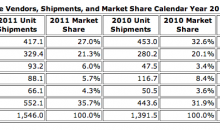
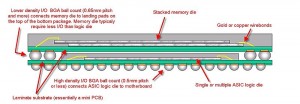

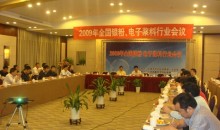
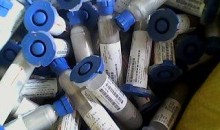
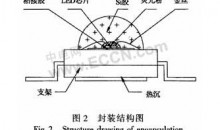
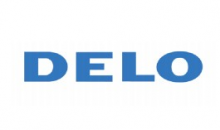

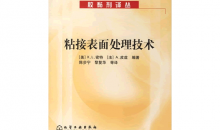
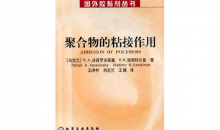
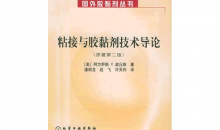




怎么我在胶水网上注册几天都没有批准?我急着找东西,拜托快点。谢谢!
您好,您是在r4e上还是在a4e上注册啊? r4e注册时请务必注明注册原因才能通过后台人工审核的!
厉害呀!楼主有兴趣的,我这里也有部分资料,关天乐泰的!~~
呵呵,可以发到电子胶水论坛共享一下啊!
还想了解的仔细点,期待新的佳作,谢谢!!
你好,此文为乐泰公司人员撰写,我是有感而发而已,呵呵!